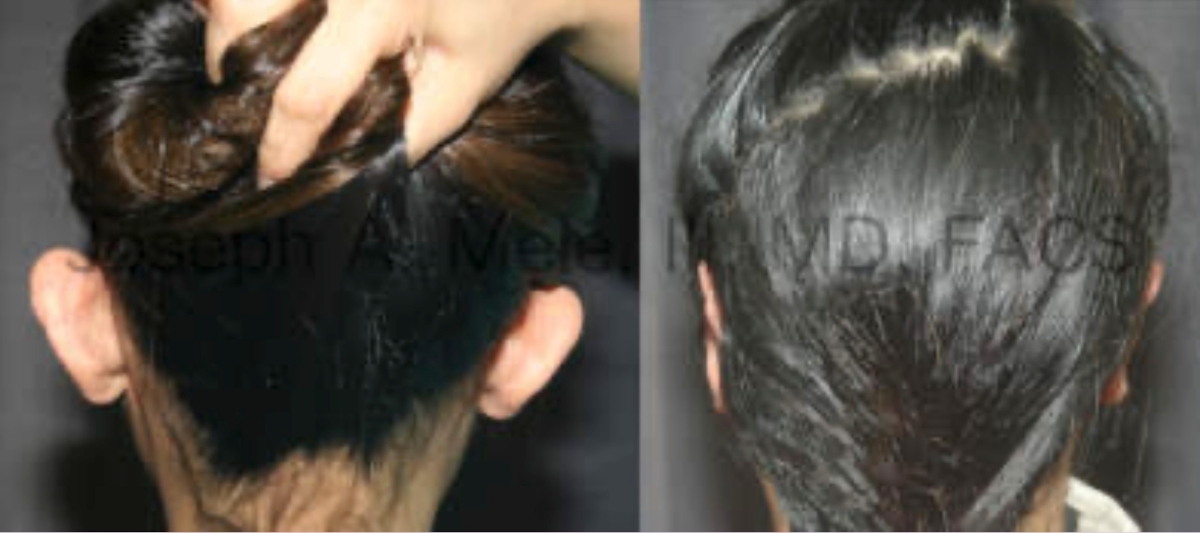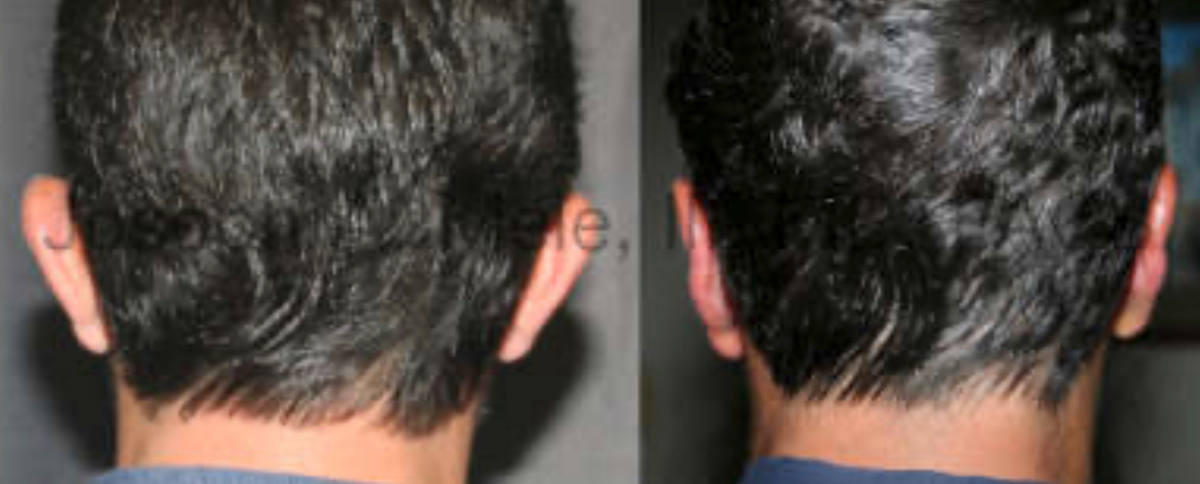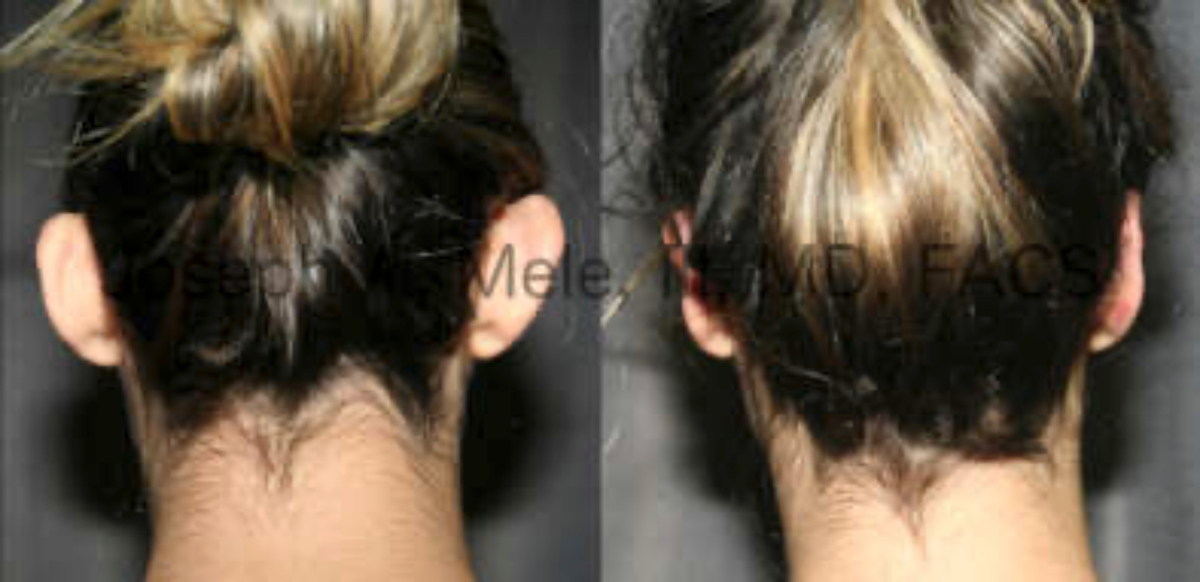People choose Otoplasty, also known as Cosmetic Ear Surgery or Ear Pinning, for a variety of reasons related to both aesthetic and psychological concerns. Today, we discuss some of the common reasons why people present to our Walnut Creek Plastic Surgery Clinic for Otoplasty.
Prominent or Protruding Ears

The combination of poor antithetical fold formation and an enlarged choncha is a double whammy of prominent ears. The cartilage is folded, reduced and rotated back to provide the optimal results.
By far, the most common reason for Otoplasty is to correct prominent or protruding ears. Individuals can have ears that stick out more than usual due to: 1) an underdeveloped antihelical fold, which allows the top of the ear to stick out excessively or 2) an enlarged conchal bowl, the part that catches sound, especially when it is rotated forward.
Often ear prominence is bilateral; however, sometimes only one side is affected. Whether one of both ears are affected, Otoplasty reshapes and repositions the ears closer to the head, creating a more natural and balanced appearance and improved facial harmony.
Psychological and Emotional Reasons
Individuals with prominent or misshapen ears may feel self-conscious or embarrassed about their appearance, which can affect their self-esteem and confidence. Children and teenagers with prominent ears are particularly vulnerable to teasing and bullying about their appearance.
Otoplasty can improve the shape and position of the ears, leading to increased satisfaction with their appearance and a boost in self-confidence. Otoplasty can be performed at a young age to prevent or reduce the psychological impact of bullying related to ear shape or size.
Ear Deformities or Abnormalities

When an individual has poor antithetical fold formation, the top of the ear sticks out. By creating the fold, the ear is tucked in and less projecting.
Some people are born with congenital ear deformities. Three of the more common are:
- Microtia – underdeveloped or absent ears
- Stahl’s ear – pointed ears
- Lop ear – when the top of the ear folds down and forward
Otoplasty can be used to correct these conditions and create a more typical ear shape.
Accidents or injuries can damage the ears, resulting in deformities. Piercing and Scalpelling, typically performed to enhance the ear, can also result in deformities. Piercings can pull through and gauges can thin the skin around them resulting in fettuccini looking era lobes. Otoplasty can help reconstruct and restore the appearance of the ears after these types of trauma.
Desire for Improvement After Previous Surgery
Revision Surgery is not unusual after Otoplasty. Trying to get a soft complexly folded pinna to stay exactly where we want it to can be difficult. Perfect symmetry is unlikely, as the ears are not identical. In some cases, individuals who have had previous ear surgeries may not be satisfied with the results or may experience complications or recurrence. Revision Otoplasty can often provide additional improvement.
Cultural or Personal Preferences

When the ears stick out due to an enlarged choncha, the cartilage is both reduced and rotated back to improve the ears’ position.
In some cultures, certain ear shapes are considered more aesthetically pleasing. Individuals may choose otoplasty to align with these cultural standards or personal preferences. In China, prominent ears and “Elf Ears” may be associated with youth and the reverse of the typical American Otoplasty may be requested to make the ears stick out and more pointy.
Otoplasty Consultations
Overall, Otoplasty is a personal decision, often driven by the desire to improve one’s appearance and self-confidence. It is important for anyone considering Otoplasty to consult with an experienced and Board Certified Plastic Surgeon to discuss their goals, understand the procedure, and set realistic expectations for the outcome.
In the San Francisco Bay Area, call (925) 943-6353 to schedule your private consultation appointment.
Previous Post Next Post